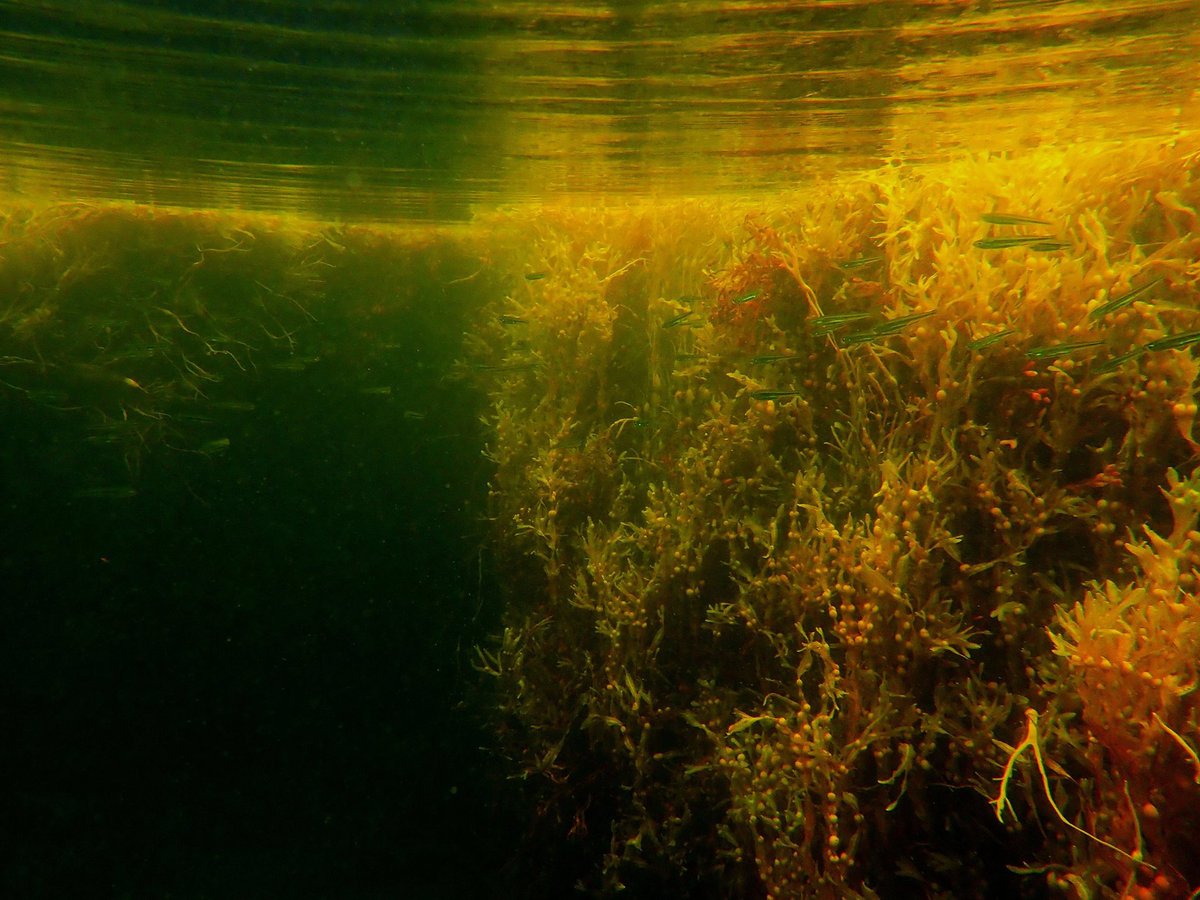Hello everyone. I'm José Fariñas @DrJoseMFarinas, honoured to take over from @c_guilfoyle1 as the new curator of the account. Colin & @IrishRainforest showed us their inspiring work with upland habitats in Ireland. If you allow me I'll shift the focus to the marine realm. 

Just a bit about me first. I'm a Lecturer in applied freshwater and marine biology at the Atlantic Technological University in Galway City @ATU_GalwayCity and my many interests as a researcher @MfrcATU focus on the functioning, biodiversity and resilience of biogenic habitats... 



which are those marine habitats structured by living organisms, which could be many, from tube building 'worms' (Sabellaria, Serpula -left pic by @SeaSearchIre-) to bivalves (mussels, oysters, flame shells), seagrass and seaweed (kelp, Ascophyllum and other brown algae). 



While in the past the main focus of my research was shellfish biogenic reefs (e.g. oysters, more on that later) my work in projects such as @GENIALG_EU gave me the seaweed bug and I became obsessed with the ecological role of seaweed. Not only wild seaweed but also cultivated. 



For #GENIALG I was initially based at @nuigalway @RyanInstitute working with Dr. Ronan Sulpice and Prof. Mark Johnson @MarkJ97 and great many research students doing their work with me, among them Inés Coca now at @BlueWise_Marine who did her MSc on kelp farms. 



Many others helped (Sam Afoullouss @Afroloose) & a cohort of @EUErasmusPlus @IMBRSea students I had the fortune to work with me. I'll name them all on the dedicated thread to ecosystem services/impacts from seaweed farming. Check out the GENIALG results
genialgproject.eu/results/

genialgproject.eu/results/


There is more to learn on the ecological role of seaweed #aquaculture, that's where @Anthony_Adu_G @GMIT_Research PhD come in. Based at the @MfrcATU working on benthic and canopy diversity and food webs with me & @TheConorGraham. Anthony and I will present at #ICESASC22 Dublin. 



Moving onto the large seaweed expanses of Asco (Feamainn Bhui) we are lucky to have in Irish shores. They are crucial to the functioning of intertidal ecosystems, supporting food webs in our shorelines. We are collecting baseline biodiversity data to characterise these habitats. 



We have seagrass beds in Ireland and I will talk about them but do follow @ProjectSeagrass and others. Like seaweed, they are ecologically important, provide habitat for a plethora of species, eg fish that use them as nurseries. They are also carbon sinks! 📸Salthill and Ventry. 



Finally, shellfish. I've a deep interest for bivalves as keystones, they can create 3D complex habitats host to 1000s of species. But shellfish make an easy meal. Exploited since the Mesolithic the habitats they created are globally endangered, a poor reflection of what we lost. 



Shellfish, are gregarious, create raised habitats for other organisms to settle. As filter feeders they maintain water quality, act in bottom up control of trophic webs, making nutrients available to infauna, also locking carbon in biodeposited sediments.
I will focus on two shellfish habitats we have in the island of Ireland, mainly because they are those I have worked on more extensively and study in detail in the past: the horse mussel Modiolus modiolus and the native oyster Ostrea edulis. 



Drawing from my PhD studying the (sadly) famous Strangford Lough Modiolus & research collaborations with colleagues @QUBelfast @HeriotWattUni on Modiolus+native oysters I will summarise their main ecological role, distribution + decline. Right📸 Richard Shucksmith @ImagesEcology 



Restoring these habitats to ambitious baselines by reintroducing or supplementing the ecosystem engineers that create them can help in the battle to reverse current biodiversity/climate crisis. I'll hope to cover some approaches with links to Ireland towards the end of the week. 



I could talk loads more but I think I will better leave it here, enough for an 'introductory' thread! I have definitely forgotten many people and organisations, and links to papers which I will mention in the corresponding threads over the next weeks, eg those @NativeOysterNet
An end note: photos (many not great) will all be mine but I'll credit authors if not (eg the very talented Richard Shucksmith @ImagesEcology). Threads will be based on my work + peer reviewed research. Any opinions will be mine. I hope you will find my tenure here interesting! 

That last tweet was meant to be a short video! Small-spotted catshark (Scyliorhinus canicula) (aka lesser-spotted dogfish) sheltering in a kelp bed (Laminaria hyperborea) off Cuan Pier, Ventry Harbour. The rope you see guides the diver along the 100m survey transect.
• • •
Missing some Tweet in this thread? You can try to
force a refresh













